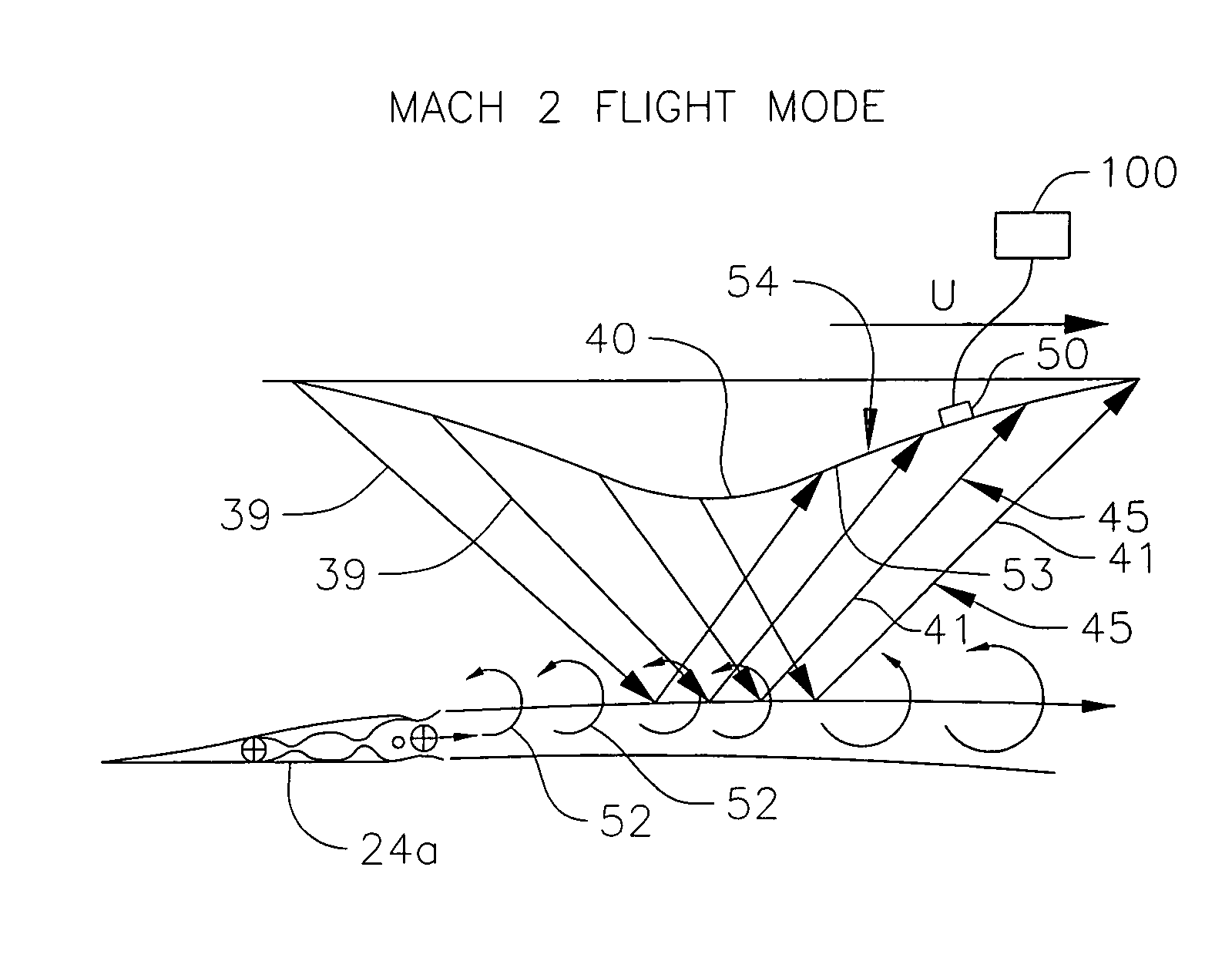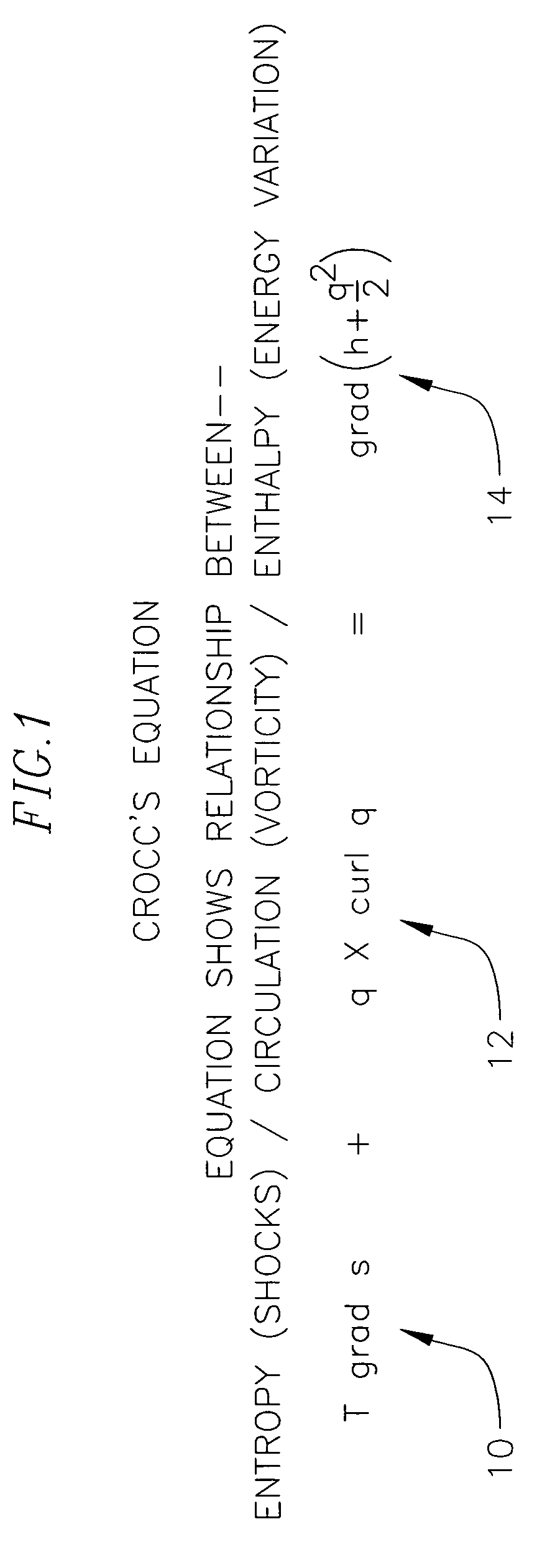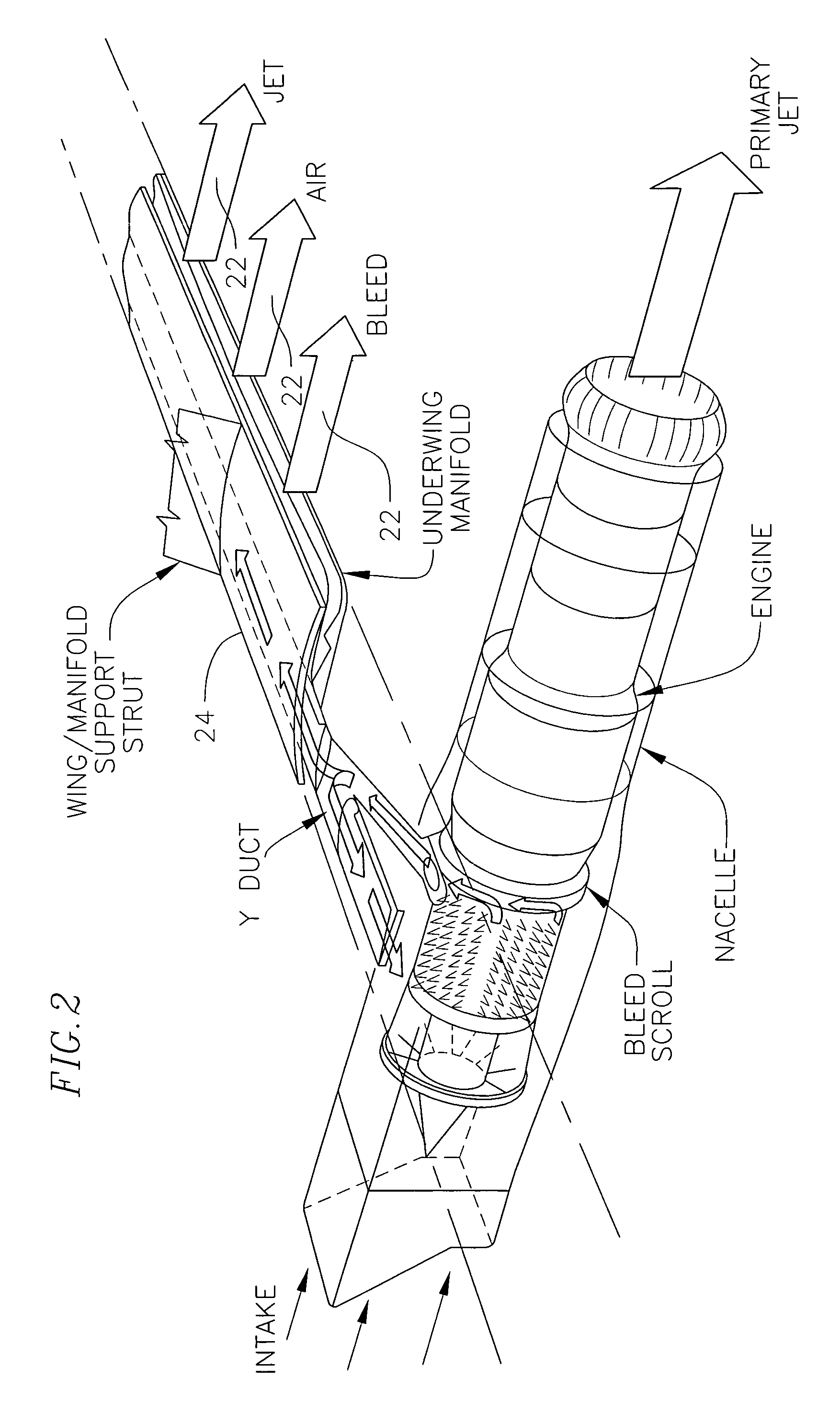Supersonic aircraft footprint spreading control system and method
a control system and supersonic technology, applied in the direction of airflow influencers, fuselages, transportation and packaging, etc., can solve the problems of pressure footprint, supersonic wave drag, sonic boom, etc., and achieve the effect of reducing sonic boom and reducing sonic boom
- Summary
- Abstract
- Description
- Claims
- Application Information
AI Technical Summary
Benefits of technology
Problems solved by technology
Method used
Image
Examples
Embodiment Construction
[0017]In the following paragraphs like numbers refer to the same or similar items from figure to figure.
[0018]The weight of an airplane in flight appears on the ground as a force which may be expressed as the product of a footprint pressure times the area over which it acts. For a subsonic aircraft this footprint area is very large, in the form of a circular mound, with a pressure so weak that it cannot be felt on the ground and a pressure rise so small that no audible sonic boom is heard. For a conventional supersonic aircraft, in contrast, the pressure footprint area is very small, in the form of an “N” wave 20, and the corresponding pressure rise is rapid and strong, producing a very annoying sonic boom (FIG. 3A).
[0019]The footprint is small because shock waves bound the footprint area and these waves both closely approach the same Mach line from opposing sides. Applicant has discovered that a larger footprint would have a corresponding initial and closing pressure rise and sonic...
PUM
 Login to View More
Login to View More Abstract
Description
Claims
Application Information
 Login to View More
Login to View More - R&D
- Intellectual Property
- Life Sciences
- Materials
- Tech Scout
- Unparalleled Data Quality
- Higher Quality Content
- 60% Fewer Hallucinations
Browse by: Latest US Patents, China's latest patents, Technical Efficacy Thesaurus, Application Domain, Technology Topic, Popular Technical Reports.
© 2025 PatSnap. All rights reserved.Legal|Privacy policy|Modern Slavery Act Transparency Statement|Sitemap|About US| Contact US: help@patsnap.com



